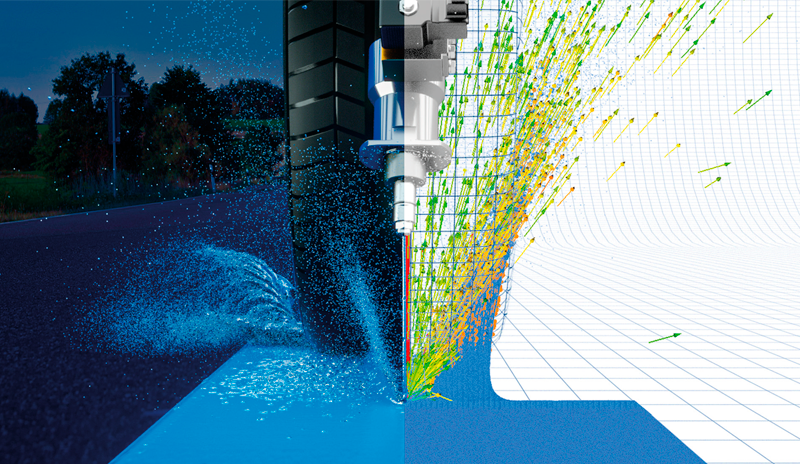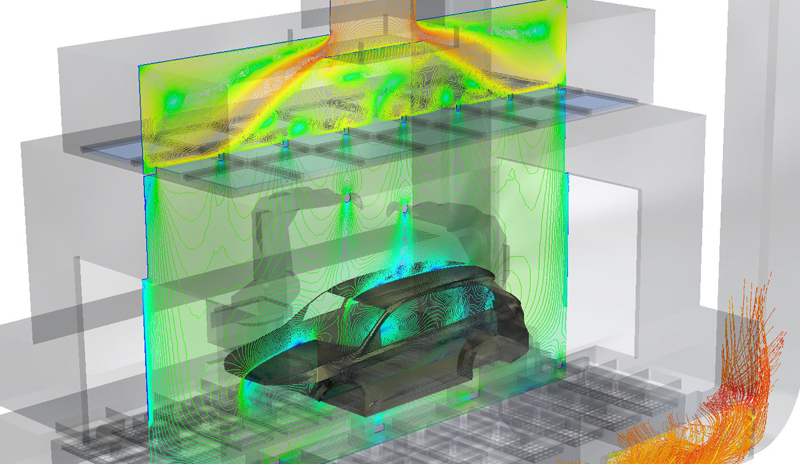Optimization of water spray parameters by 3D CFD particle simulation for an automotive anti-aquaplaning system
Futurities Year 19 n°3
By Silvestru Chiriches, Paolo Alberto Fina - EASYRAIN | Michele Merelli - EnginSoft


One in four accidents in the United States (according to the National Highway Traffic Safety
Administration) is due to adverse weather conditions. The same study reports that wet
roads are more dangerous than icy and snowy roads (46% of accidents versus 30%).
Aquaplaning and hydroplaning occur when water, accumulated on the road surface or splashed
by vehicles ahead, forms a thin layer between the asphalt and the car tyre.
This layer prevents the tyre from properly adhering and gripping, making the
vehicle uncontrollable and often causing accidents.
In this paper, we discuss the digital
modelling and simulation of the EASYRAIN Aquaplaning Intelligent Solution (AIS)
using mesh-free moving particle simulation (MPS). We used MPS to study the impact
of the pressurized water jet of the AIS system.
First, we verified the jet forces predicted by the CFD methodology with experimental configurations and compared the
MPS results with the results of track tests.
Furthermore, we analysed the influence
of different working parameters (such as water jet pressure, spray angle and injector position)
on the efficiency of aquaplaning prevention.
Considering the speed of a car, it is important to take into account aerodynamic effects and their influence on the jet. For this reason, we used a finite volume solver embedded in the CFD software itself and fully coupled with the liquid phase MPS. Thanks to the reported validations and experimental correlations, EASYRAIN can thus design and improve the AIS system without the need for time-consuming physical prototypes and expensive track tests, resulting in the best solution for a wide range of car bodies and hydraulic systems.
Read the articlesoftware
Particleworks is an advanced CFD Software solution, based on the Moving Particle Simulation (MPS) method.
particleworks

CASE STUDY
Overspray is a key problem in the paint application process. This phenomenon is caused by inefficiencies of the robots inside the spray booth and can best be solved by balancing the air flow properly in the paint application area.
automotive ansys cfd